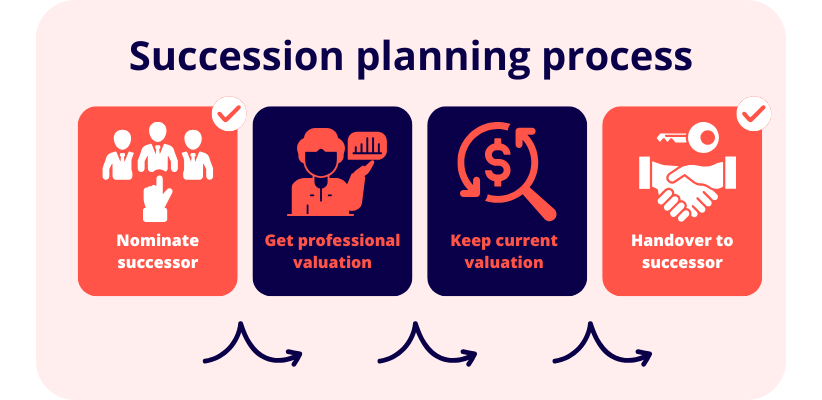If you own your own business, especially a family business, have you put any thought into succession planning?
Succession planning is as important as a personal will. After all, what actually happens to your business when you retire, want to sell up, or, heaven forbid, pass away?
Planning for these eventualities is a key concern for many business owners, yet it’s an often-overlooked step that’s easily lost in the busy mix of business life. So, if you haven’t put any thought into succession planning, it’s time to pay it some attention.
What types of businesses need succession plans?
All types of businesses! Succession planning is not confined to big enterprises. Smaller businesses need succession planning the same way ASX listed companies do. Regardless of your industry and size, it’s vital to develop succession plans to ensure continued success for your business as well as clarity around its future.
In short, if you plan on selling your business or passing it on to a family member, you need a plan.
Who should create a business succession plan?
Succession planning is not all about passing your business on to a child or family member, although this is certainly a primary mechanism. It also entails the process of selling your business to any outside buyer.
As such, every business owner that plans on selling or passing on their business or business assets, needs to undertake a succession plan.
So, before any future event takes place, having a succession plan will help reduce headaches and financial loss. As the complexity of an enterprise increases and as many people affected by an exit increase, it becomes even more necessary to prepare an effective succession plan.
Many business owners ignore succession planning because they believe that such a plan is not essential. This could be a mistake. For small businesses, while it may seem onerous or unnecessary to implement succession plans, you most certainly should.
Selling up?
The best way to lay out how to sell your business is with a well thought out succession plan.
Many small businesses have no exit or sale plans when they decide to sell. Life, business, and wealth for family business owners have overlapping links and are often difficult to disentangle. As a business owner, separating from your business can be tedious, but is essential if you’re looking to sell.
So, before you get into the nuts and bolts of selling your business to an outside party, you need a succession plan in place.
Keeping the business in the family?
Should someone leave the family business, consider the legal obligation and impact this will have on family relationships. When it comes to family businesses, consult with your relatives and recruit expert legal advice to prevent disputes relating to property and inheritance.
The succession planning process

Right, so you’ve decided to create a succession plan for your business. Good call. Where should you start?
1. Nominate your successor
The first fundamental step is simple enough – nominate the party that will succeed you and take over the business. It’s vital that this nominee is not only fully aware of what they are getting themselves into, but that they possess the requisite skills and experience to succeed.
It’s wise to have your nominee seek separate legal and business advice to ensure they have independent guidance as to the ramifications of succession.
A nominee would usually be:
-
-
- family members
- an employee
- a business partner
- an external buyer
-
2. Gain a professional valuation
A professional valuation is absolutely pivotal. You have no hope of passing on a business which does not come attached to a valuation – especially if it’s an outside buyer.
Now, valuations can shift dramatically in short periods of time, so be prepared to undertake several valuations, with a final one taking place just before you sign an agreement and hand over the business.
3. Maintain currency
Once a succession plan is in place, you may need to update it regularly as circumstances change. New valuations need to be considered and market appraisals may shift. So right up until handover, make sure you update your plan.
4. Handover
The final step is the handover and signing of agreements. If you’ve made a solid succession plan, accounting for all contingencies and possibilities, this should be straightforward. You should be able to simply step aside on an agreed date and seamlessly allow the business to be run by your successor.
Succession plan template
If you require a template to alleviate the tedium of creating a succession plan from scratch, download the handy template created by business.gov.au.
Developing a plan with an advisor
After you’ve understood the basic process, the next step is getting professional legal and business advice from a trusted advisor. One key tip is to come to your advisor ready with a basic plan mapped out and an understanding of the plan you’re about to cement.























